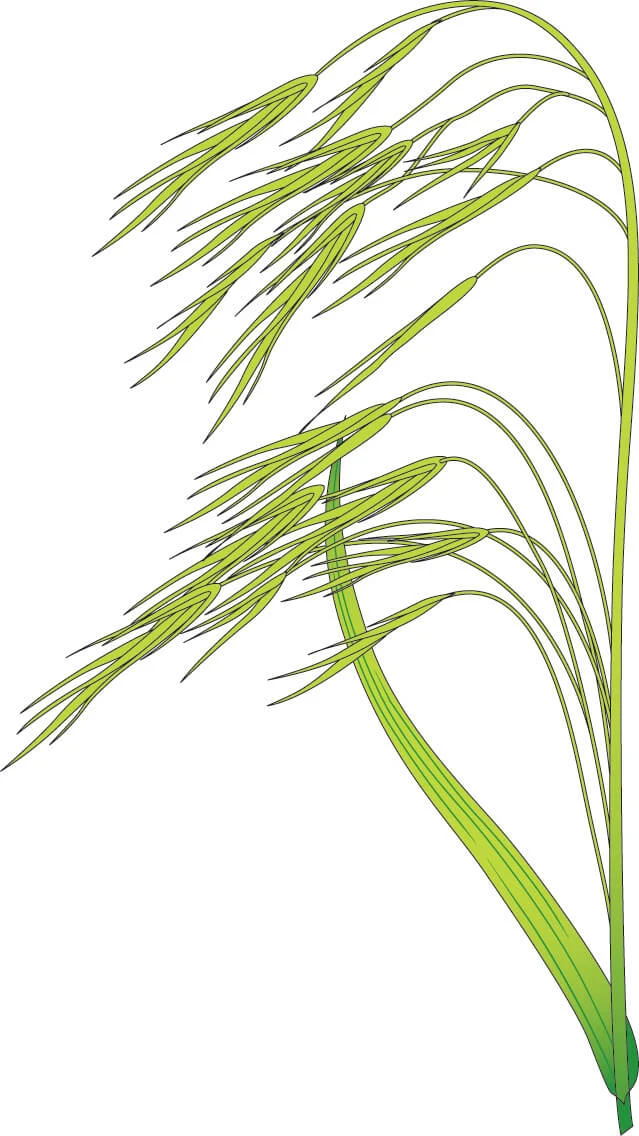
Barren brome
Anisantha (previously Bromus) sterilis
Auricles
Absent.
Importance
An increasing problem throughout British Isles mainly on arable land, especially in continuous cereals. Mainly a problem on headlands but can spread out into the field. Causes yield loss and lodging.
Description
Annual or biennial grass 30-90 cm. Tufted or solitary grass, green but reddish purple when mature. Heavy drooping panicle of spikelets 4-6 cm including awns, bearing 4-10 flowers. Up to 2,000 seeds per plant.

Barren brome flower head
Leaf blade
Green but purple later. Flat, limp and finely pointed. Surface is rough with short hairs. Rolled in bud.


Ligule

Medium: 2-4 mm. Pointed and deeply serrated.
Lifecycle:
Seeds germinate in the autumn though under certain conditions some will germinate in the spring. Dry conditions and low temperatures will inhibit germination.
Management:
Seeds left on the soil surface will germinate with ease providing there is sufficient moisture and warmth which leads to significant problems in reduced tillage cultivation systems.
The use of stale seedbeds prior to drilling is considered essential in reduced cultivation systems. Burying the seed to a depth of at least 10 cm will reduce germination.

Barren brome ligule

Barren brome in wheat.

Barren brome. © Blackthorn arable.


